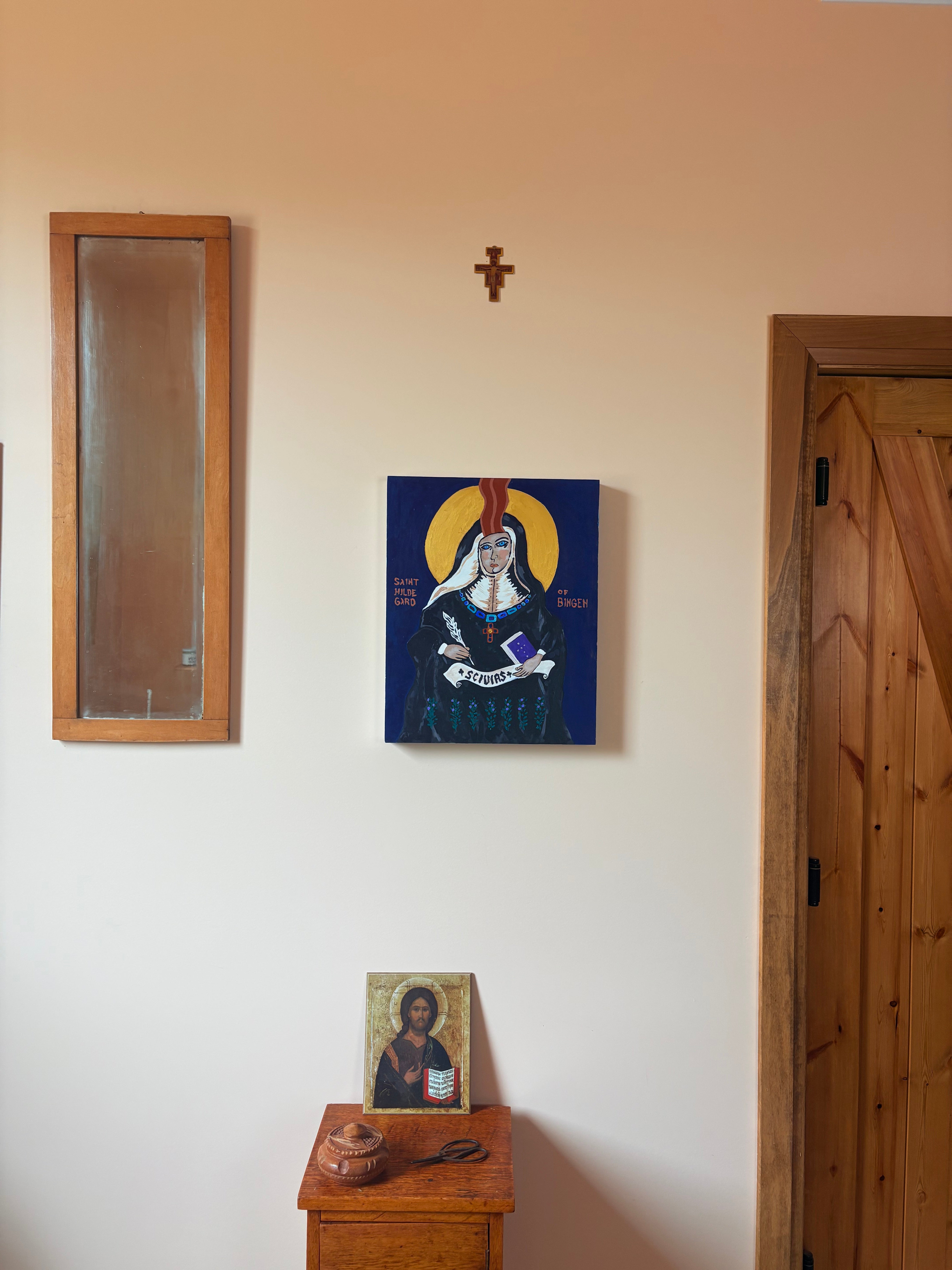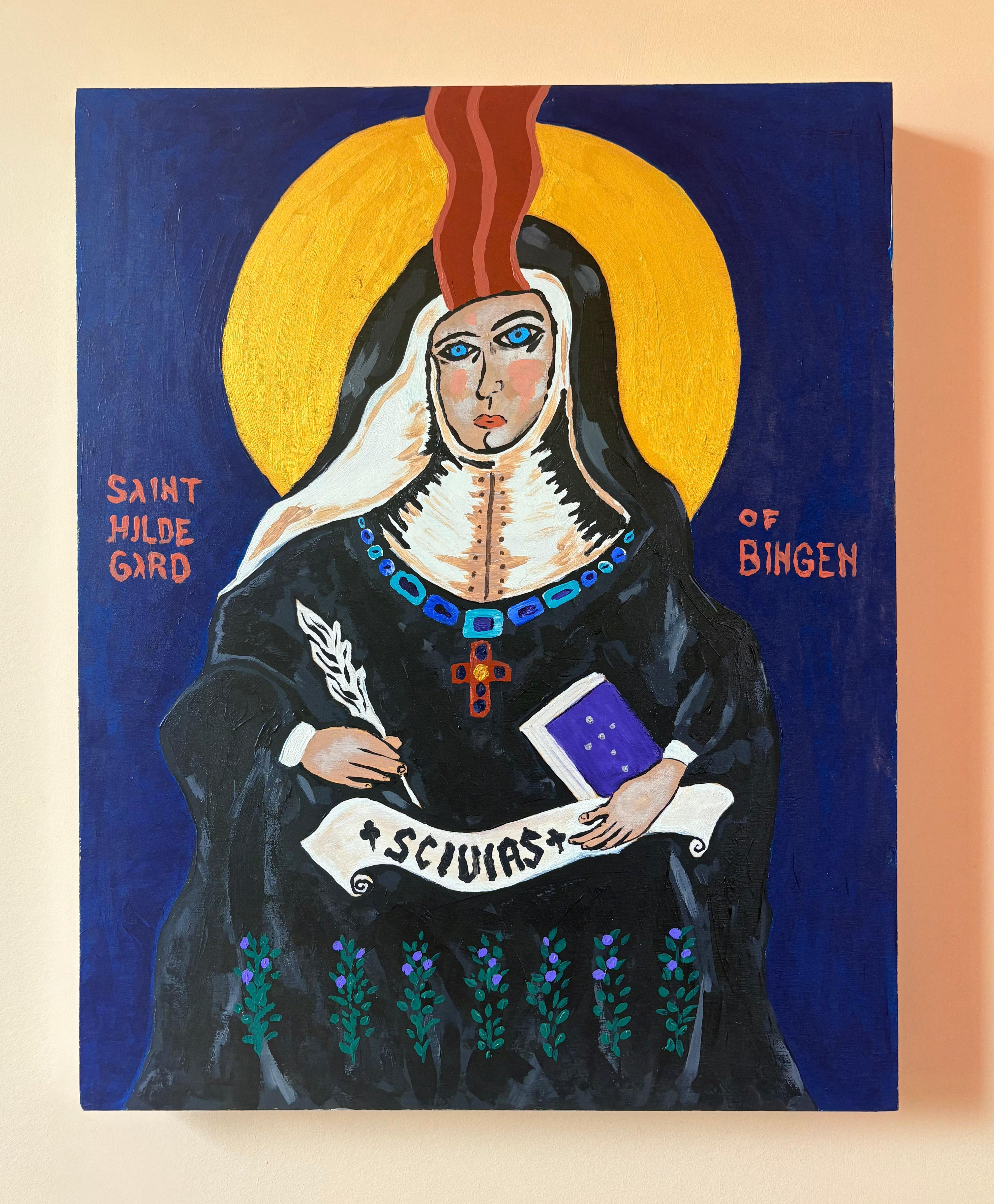


SAINT HILDEGARD OF BINGEN
Saint Hildegard of Bingen was a 12th-century German Benedictine abbess, mystic, composer, visionary, and polymath. She is one of the most remarkable women of the Middle Ages and one of the earliest named female composers in Western history. She was born in 1098 in Bermersheim, near Mainz in present-day Germany, and died on September 17, 1179 at her abbey in Rupertsberg.
From early childhood, Hildegard experienced visions of divine light and mystical insight. At the age of eight, she was entrusted to the care of a religious recluse, Jutta of Sponheim, and later entered the Benedictine monastic life. As she grew older, her visions became more intense and complex. Though she was hesitant at first, she began writing them down around age 42, with the approval of Church authorities, including Pope Eugenius III.
Her major visionary works include:
- Scivias (“Know the Ways”)
- Liber Vitae Meritorum (“Book of the Rewards of Life”)
- Liber Divinorum Operum (“Book of Divine Works”)
These writings blend theology, philosophy, cosmology, and spiritual allegory, all illuminated by striking, colorful images. She described the unity of the cosmos, the harmony of body and soul, and God’s love as the source of all being.
Hildegard was also a scientist and healer, writing texts on medicine and natural history such as Physica and Causae et Curae. Her herbal remedies and understanding of holistic health were well ahead of her time.
As a composer, she created an extraordinary body of sacred music, including the collection Symphonia armoniae celestium revelationum. Her compositions, written for female voices, are noted for their soaring melodies and mystical poetry, deeply rooted in her spiritual experiences.
Hildegard traveled widely to preach reform and spiritual renewal—a rare role for a woman in her time. She wrote extensively on theology, ethics, politics, and the Church, corresponding with popes, emperors, and bishops.
She was canonized de facto through popular devotion and papal recognition shortly after her death, but was officially canonized and named a Doctor of the Church by Pope Benedict XVI in 2012, making her one of only a few women to hold that title.
Her feast day is September 17.
Saint Hildegard is the patron saint of:
- Musicians
- Writers
- Visionaries
- Natural scientists
- Philosophers
- The environment (often honored in ecological spirituality)
She is often depicted with a quill and manuscript, surrounded by divine light or receiving visions, sometimes with stars or musical notes, symbolizing her celestial inspiration and intellectual brilliance.
16”x20” acrylic on wood.
Prayerfully made by Stephen Hotchkiss.
If unavailable please inquire about having a similar painting made.
Choose options


